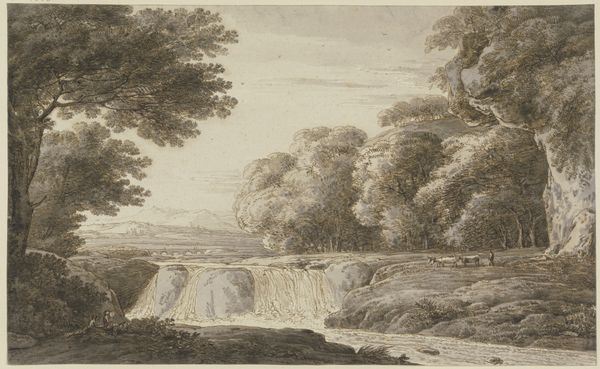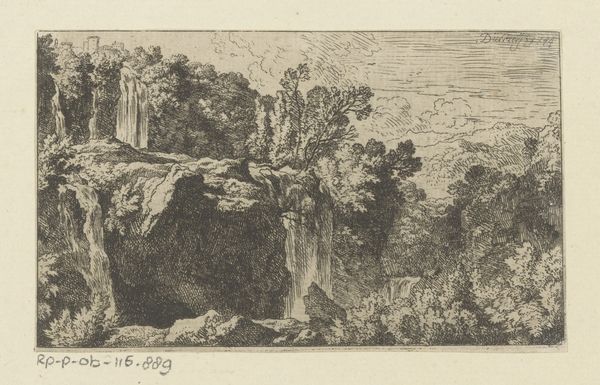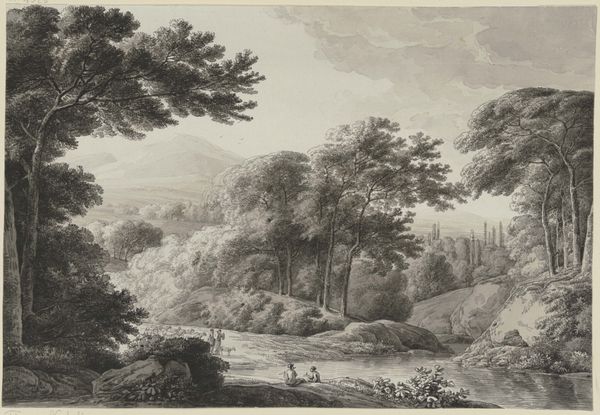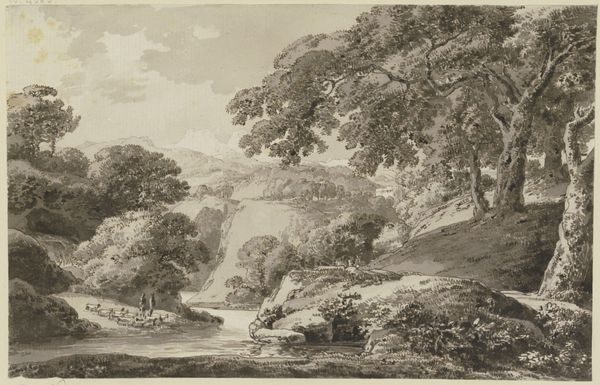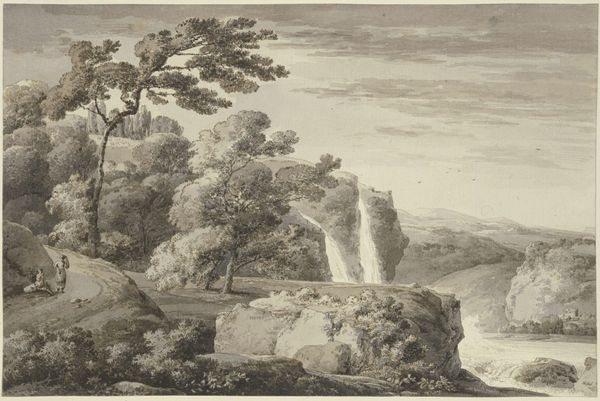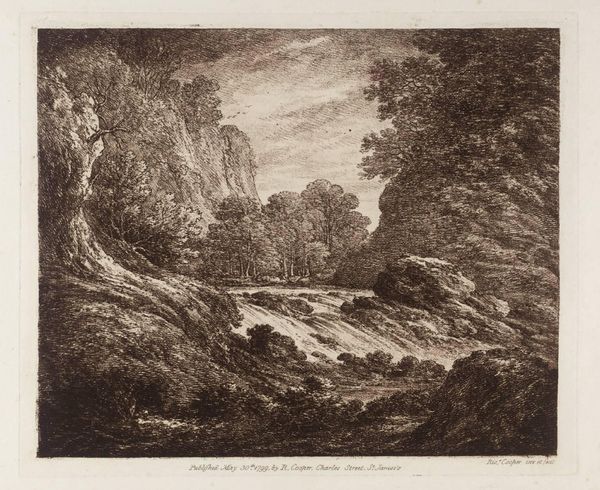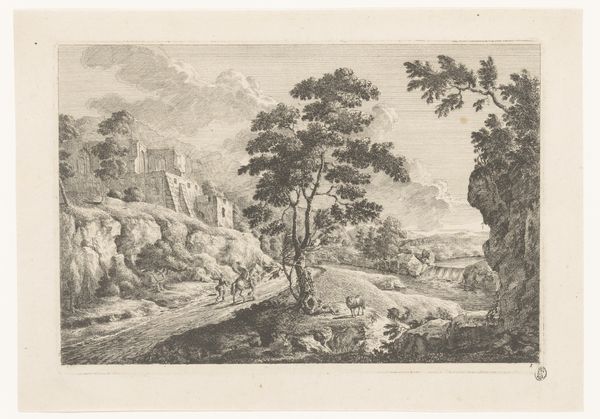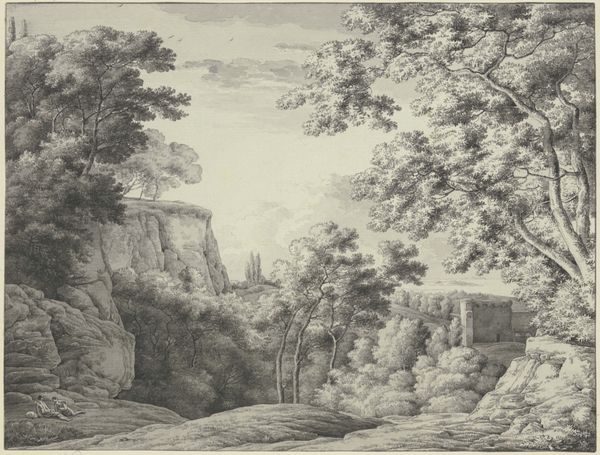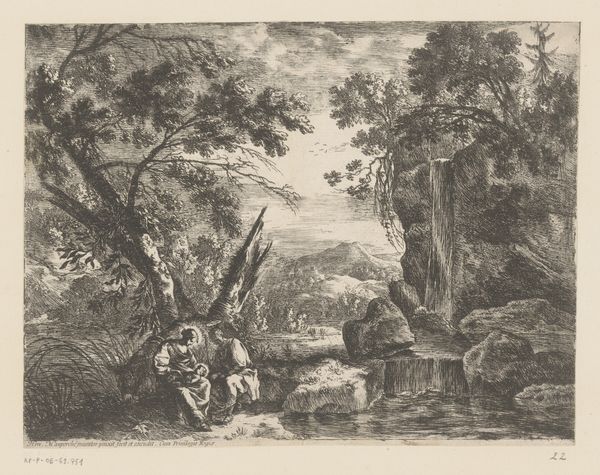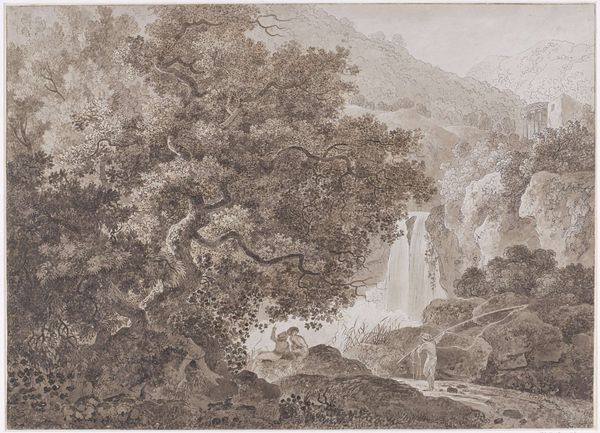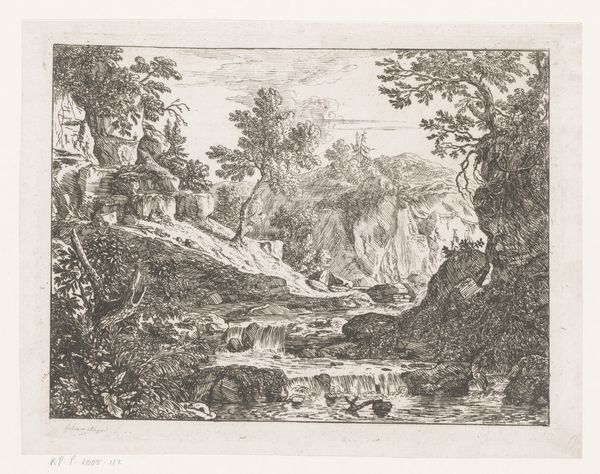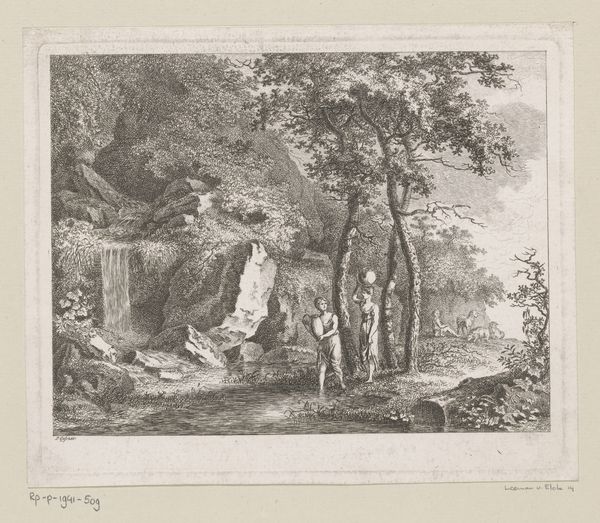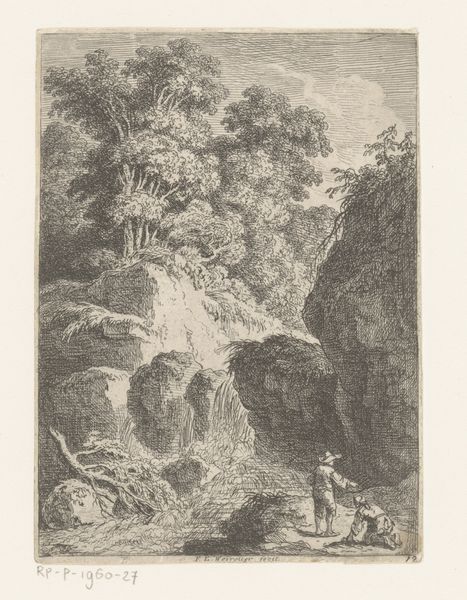
Landscape with Waterfall and a Mother and Child 1800
0:00
0:00
drawing, print, pencil
#
drawing
#
mother
# print
#
landscape
#
waterfall
#
figuration
#
child
#
pencil drawing
#
romanticism
#
pencil
#
water
#
realism
Dimensions: sheet: 7 5/16 x 10 5/16 in. (18.5 x 26.2 cm)
Copyright: Public Domain
Editor: So, this is Johann Peter Beer’s "Landscape with Waterfall and a Mother and Child" from 1800. It’s a pencil drawing, and it feels very... serene. The detail is incredible for just pencil. What do you see in this piece that maybe I'm missing? Curator: I see the pencil itself as a key component. Think about where pencils came from in 1800 - the extraction of graphite, the labor involved in shaping it, and its availability primarily to the privileged. The "serenity" you observe becomes complex when considered through these lenses. How does the Romantic ideal of nature here become packaged as a commodity? Editor: That's interesting! I was just thinking about how beautiful the landscape is, and the soft way the pencil captures the water... But what you're saying makes me consider the social implications. So, who would have had access to such art supplies and, therefore, this specific visual experience? Curator: Precisely! And where would this drawing have been displayed, and for whom? Was this scene based on first-hand experience or derived from other images circulated within a specific social sphere? The choice of a drawing, over say, a painting, implies different levels of labor and production cost. Who benefits from this idyllic scene? Is it truly "realism," or a constructed image designed for specific consumption? Editor: I hadn't thought of it that way. So, even the seemingly simple medium of pencil connects to broader systems of production and consumption within society at the time? It definitely complicates the surface-level reading of Romanticism and beauty. Curator: Exactly. The very materiality of art opens doors to social critique. Examining process helps to uncover how labor, extraction, and accessibility shape not just the object but its meaning. Editor: I'll definitely look at artworks differently now! Focusing on materials opens up so much to think about, not just the aesthetic surface. Curator: Indeed, recognizing that what's in front of you as more than "just art" helps contextualize it in powerful and nuanced ways.
Comments
No comments
Be the first to comment and join the conversation on the ultimate creative platform.
